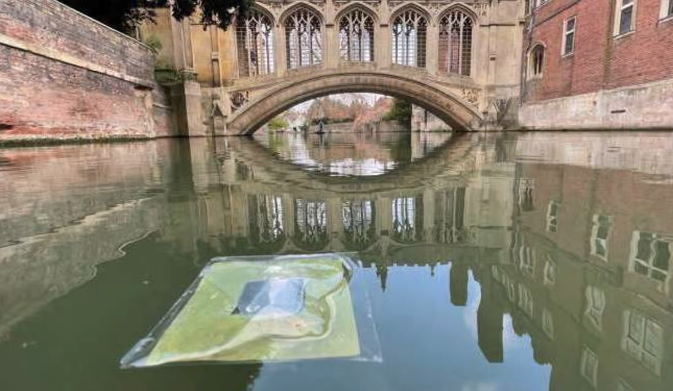Scientists may one day be able to undertake large operations at sea thanks to these floating “artificial leaves” that convert water and sunlight into clean fuel.

Researchers from the University of Cambridge in the United Kingdom have created incredibly thin, flexible gadgets – drawing inspiration from photosynthesis. The inexpensive, autonomous gadgets might be used to provide a sustainable substitute for petroleum without taking up space on land because they are light enough to float.
The River Cam’s lightweight leaves have demonstrated in outdoor experiments that they can transform sunlight into fuels just as effectively as plant leaves. The testing took place close to well-known Cambridge locations like the Bridge of Sighs, the Wren Library, and King’s College Chapel.
These artificial leaves might be employed on filthy waterways, ports, or even at sea if they were scaled up, which would help lessen the dependency of the world’s shipping industry on fossil fuels, according to an article in Nature.
Renewable energy technologies like wind and solar have substantially decreased in price over the years and become more widespread. This could have a significant impact on the shipping industry, which is responsible for 2.5% of global emissions, and the International Maritime Organisation has mandated emission reductions of 50% for all vessels by 2050.
The Cambridge research team, headed by Professor Erwin Reisner, has been striving to address this issue for a number of years by creating sustainable alternatives to gasoline that are based on the principles of photosynthesis. They created an artificial leaf in 2019 that produces syngas from water, carbon dioxide, and sunlight – a vital step in the manufacturing of many chemicals and drugs, according to Popular Mechanics.
In the earlier version, two light absorbers were combined with the appropriate catalysts to make gasoline. The device was hefty due to the use of thick glass substrates and moisture-resistant coatings.
‘We wanted to see how far we can trim down the materials these devices use, while not affecting their performance,’ said Reisner. ‘If we can trim the materials down far enough that they’re light enough to float, then it opens up whole new ways that these artificial leaves could be used.’
‘Artificial leaves could substantially lower the cost of sustainable fuel production, but since they’re both heavy and fragile, they’re difficult to produce at scale and transport,’ according to the paper’s co-lead author, Dr Virgil Andrei.
Picture: Popular Mechanics
ALSO READ: New floating drones could help fight plastic pollution















